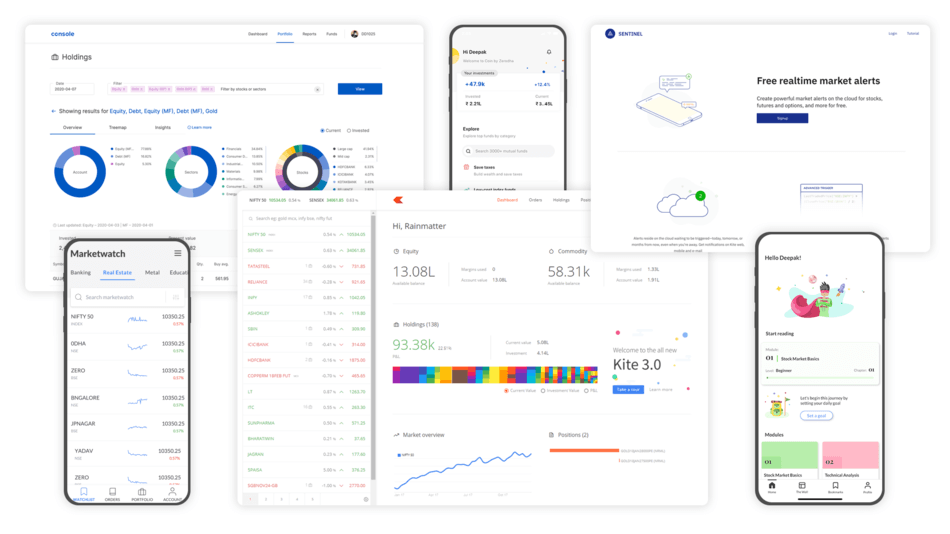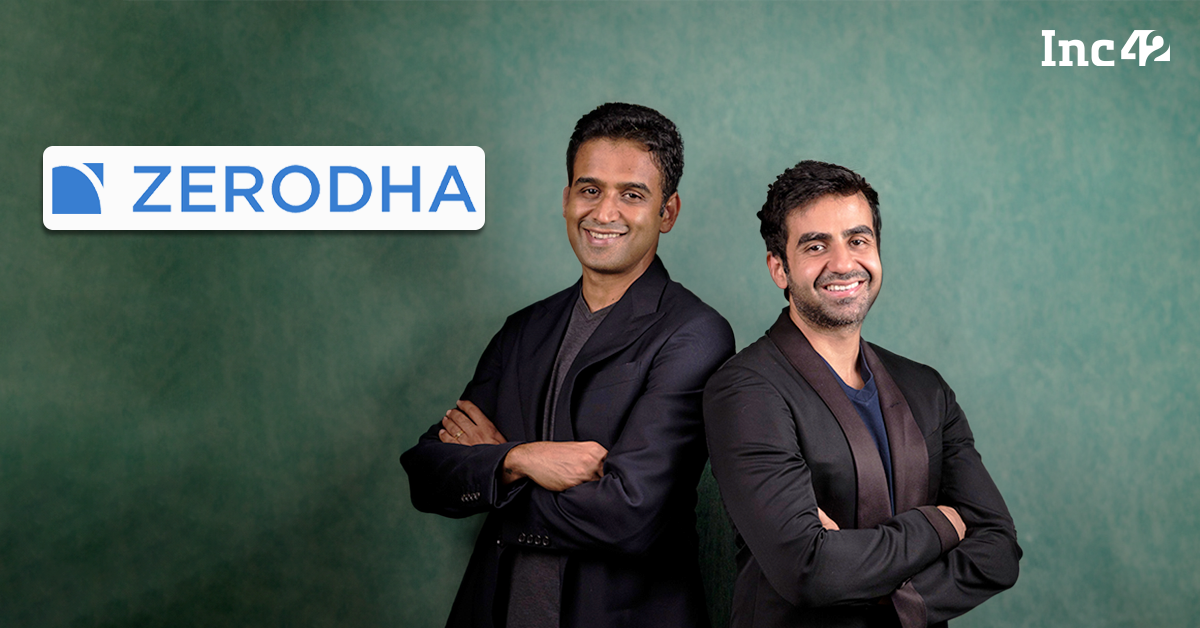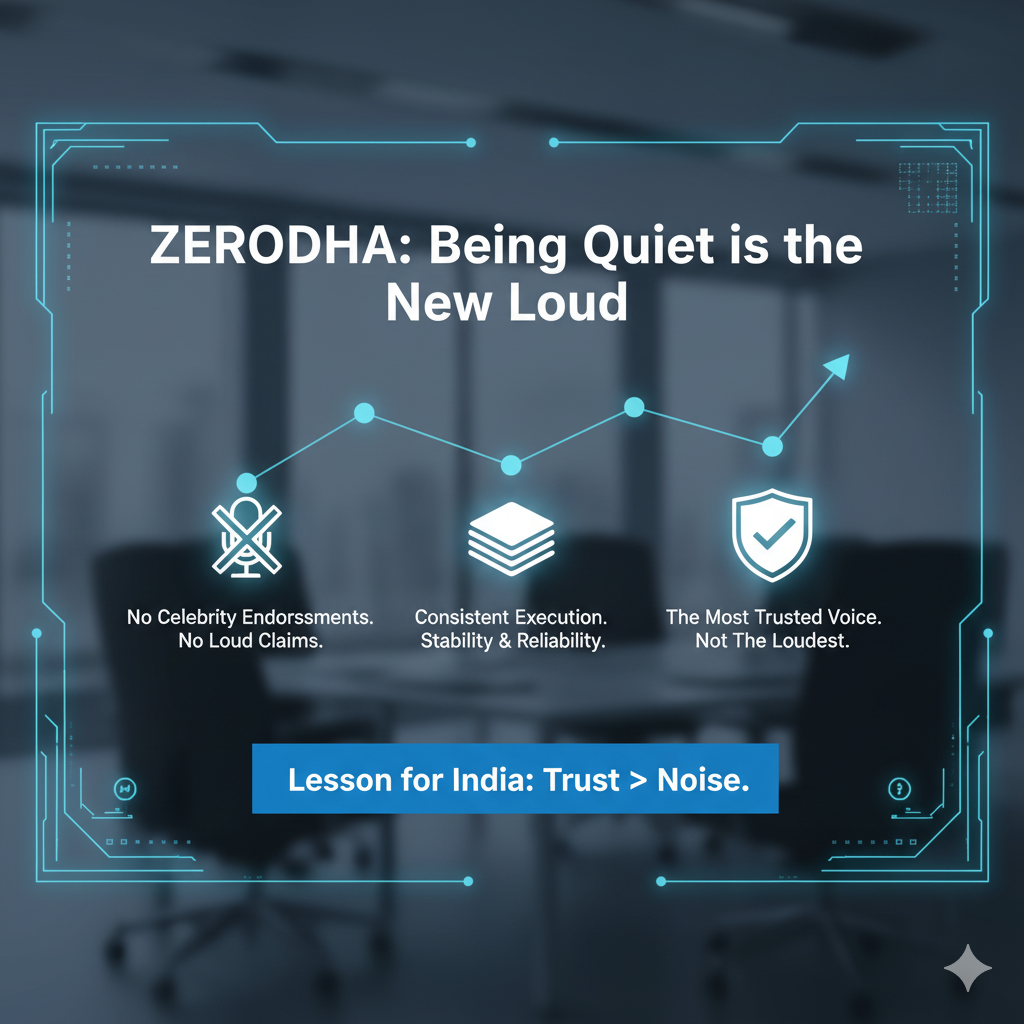The Silent Shark of the Indian Stock Market
What if I told you there’s an Indian company that earns ₹2,900 crore in annual profit without spending a single rupee on advertising?
No flashy YouTube ads, No influencer collaborations and No IPL sponsorships.
Meet Zerodha — the bootstrapped unicorn that quietly conquered the Indian stock market. While most startups burn venture capital money to acquire customers, Zerodha built a ₹6,000 crore empire with zero investors, zero debt, and a loyal community of over 12 million users.
Let’s break down the Zerodha business model, how it generates massive profits, and the key lessons any entrepreneur in India can learn from its success.

What is Zerodha? From Bangalore Startup to Market Leader
Think of the Indian stock market as a giant bazaar. Zerodha is the calm, confident shopkeeper who doesn’t need to shout to attract the biggest crowd.
Founded in 2010 by brothers Nithin and Nikhil Kamath in Bangalore, Zerodha was born out of a simple frustration: the Indian brokerage industry was filled with outdated technology, high fees, and non-transparent charges. Nithin, an avid trader himself, decided to build the platform he always wanted.
The name “Zerodha” combines “Zero” and “Rodha” (a Sanskrit word for barrier), perfectly capturing their mission: to break down the barriers to trading and investing for everyday Indians.

The Zerodha Business Model: How Do They Make Money?
Zerodha’s revenue model is brilliantly simple and transparent, which is why it has earned so much trust. Here are their primary income streams:
- Flat Fee Brokerage (₹20 Per Trade): This is their core offering. Whether you trade for ₹10,000 or ₹10 lakhs, the fee for an intraday trade is a flat ₹20. This disrupted the traditional model where brokers charged a percentage of the trade value, making Zerodha the go-to platform for active traders.
- Account Opening & Maintenance Fees: A one-time fee of ₹200-₹300 to open an account. While small, this adds up to a significant amount when multiplied by millions of users. They also charge a small Annual Maintenance Charge (AMC).
- Interest on Idle Account Funds: The money lying in your Zerodha trading account (your “float”) is kept with partner banks. Zerodha earns interest on this massive pool of funds. It’s a game of tiny margins on a colossal scale.
- Premium Partner Platforms: Zerodha offers powerful add-on tools for advanced traders through platforms like Streak (algo-trading) and Sensibull (options trading). They earn commissions or have an ownership stake in these platforms.
- World-Class Trading Tools (Kite, Coin, Console): Their flagship platforms like Kite (for trading) and Coin (for mutual funds) are free. However, their smooth, reliable user experience encourages users to trade more, which in turn generates more of those ₹20 fees.

Zerodha vs. Groww vs. Upstox: A Tale of Profit vs. Promotion
The difference between Zerodha and its VC-funded competitors is stark:
- Zerodha: “We built a great product, and the profits followed.” (No ads. Just value.)
- Groww & Upstox: “Let’s spend hundreds of crores on marketing and acquire users, we’ll figure out profitability later.”
While competitors have posted significant losses despite massive advertising budgets, Zerodha has remained profitable year after year.
Why the Zerodha Model Works: 3 Key Lessons
1. Product Over Promotion
Zerodha invested its resources in building exceptional, user-friendly technology like Kite, Coin, and Console. When your product is that good, your users become your advertisers through word-of-mouth.
- Lesson for India: In a competitive market, a superior product that solves a real problem will always beat a mediocre product with a huge marketing budget in the long run.

2. Slow, Profitable Growth Builds Strong Roots
While other Indian startups were in a race to raise funds and scale at any cost, Zerodha took the “boring” path:
- Built in silence.
- Focused on profitability from day one.
- Never spent more than they earned.
This disciplined approach made them resilient and independent.
- Lesson for India: Don’t chase vanity metrics or valuations. Chase a sustainable business model that can withstand market cycles.

3. Being Quiet is the New Loud
- No celebrity endorsements.
- No controversial headlines.
- No over-the-top “disruption” claims. Zerodha’s power comes from its quiet, consistent execution. In a chaotic startup world, their stability and reliability became their biggest marketing assets.
- Lesson for India: You don’t need to be the loudest voice to win. You need to be the most trusted one.

Final Thoughts: The Real Mic Drop is Profit
Zerodha didn’t just play the game differently; they wrote a new rulebook for Indian startups. They proved that in a noisy world, clarity wins. In a crowded market, trust scales. And in business, profit is the ultimate validation.
So whether you’re building a blog, a brand, or a business in India, remember the Zerodha story:
Being profitable is always cooler than being popular.

